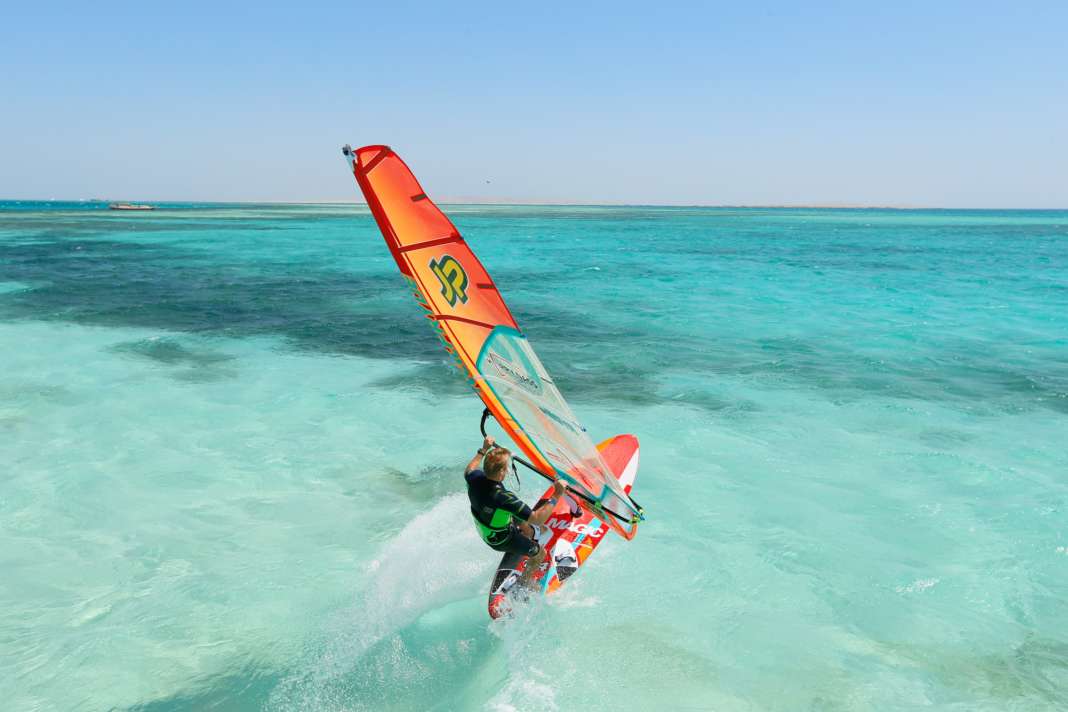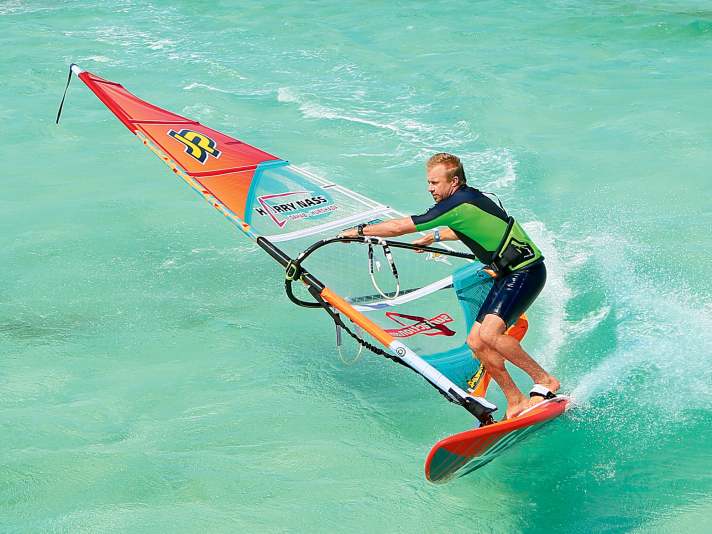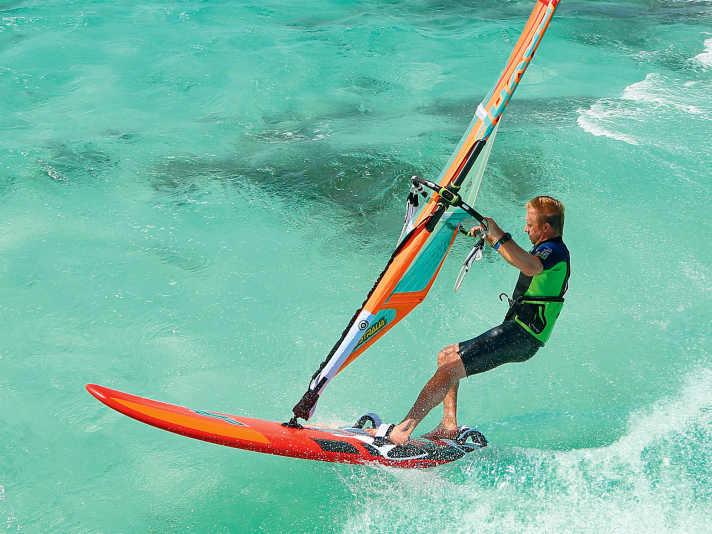





With a tight jibe, the focus is less on perfect gliding and more on the small radius. The technique therefore differs considerably from the "normal" power jibe and works best with manoeuvre-oriented boards (e.g. freemove or freestyle wave).
While with all other types of jibes you are aiming to gather maximum speed in a roomy wind, with tight jibes the approach tends to be half-wind. If there is a lot of wind, it can be useful to reduce the speed a little by opening the sail and applying a slight load to the stern before starting.
The main difference with a tight jibe is that you don't let the sail pull you into the turn, but lean back and put weight on the tail of the board. This allows you to jibe on the spot. However, the shifting, stabilising and restarting is much more tippy because the board is just bobbing. In the gallery above you can see step by step what you need to consider when jibing tight!
Technique comparison: narrow & wide jibes
Two types of jibe with completely different techniques. With the power or carving jibe, the focus is on an initiation with maximum speed and a wide radius. To do this, Andy lets the sail pull him forwards and inwards into the turn, building up the necessary pull by stretching the front arm and holding the sail tight with his back hand.

It's a completely different story with the tight jibe, where a tight radius is only possible with reduced speed and a heavy stern load. Andy therefore opens the sail noticeably with his back hand and shifts the weight heavily onto his back leg. Planing becomes a minor matter here, but he can turn the jibe on the beer mat. Only when the board falls out of planing does he load it further forwards again to prevent the tail from diving (see gallery above).

